
Elizabeth Southerden Thompson, later known as Lady Butler, was a British painter who specialised in painting scenes from British military campaigns and battles, including the Crimean War and the Napoleonic Wars. Her notable works include The Roll Call, The Defence of Rorke's Drift, and Scotland Forever!. She wrote about her military paintings in an autobiography published in 1922: "I never painted for the glory of war, but to portray its pathos and heroism." She was married to British Army officer William Butler, becoming Lady Butler after he was knighted.
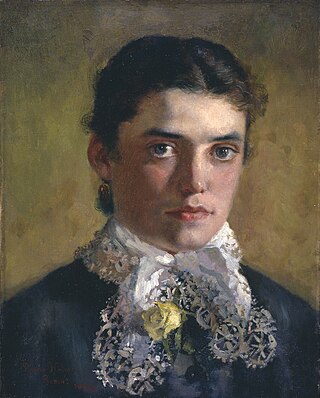
Rhoda Holmes Nicholls was an English-American watercolor and oil painter, born in Coventry, England. She studied art in England and Italy, and her work was viewed and praised at the time by the queens of both countries. A body of work was created in South Africa by Nicholls of Port Elizabeth area's scenery, wildlife and architecture. She lived there on her brothers' 25,000-acre ostrich farm for one year.

Henriëtte Ronner-Knip was a Dutch-Belgian artist chiefly in the Romantic style who is best known for her animal paintings; especially cats.

Elizabeth Nourse was a realist-style genre, portrait, and landscape painter born in Mt. Healthy, Ohio, in the Cincinnati area. She also worked in decorative painting and sculpture. Described by her contemporaries as "the first woman painter of America" and "the dean of American woman painters in France and one of the most eminent contemporary artists of her sex," Nourse was the first American woman to be voted into the Société Nationale des Beaux-Arts. She also had the honor of having one of her paintings purchased by the French government and included in the Luxembourg Museum's permanent collection. Nourse's style was described by Los Angeles critic Henry J. Seldis as a "forerunner of social realist painting." Some of Nourse's works are displayed at the Cincinnati Art Museum.
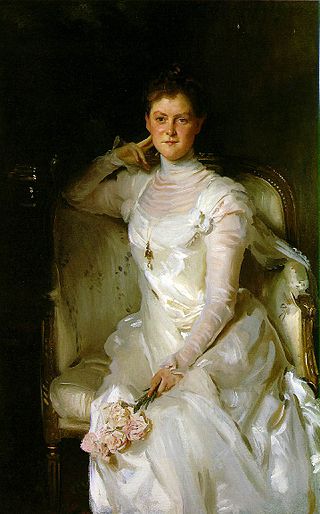
Sarah Choate Sears (1858–1935) was an American art collector, art patron, cultural entrepreneur, artist and photographer.

Henrietta Mary Ann Skerrett Montalba was a British sculptor, born into a renowned family of artists. She studied art at what was to become the Royal College of Art with fellow-student, Princess Louise, Duchess of Argyll. The Princess painted a portrait of her which today hangs in the collection of the National Gallery of Canada. She first exhibited at the Royal Academy in 1876, and her work was often seen at the Grosvenor Gallery in London. Montalba was rarely separated from her family, residing in later days chiefly at the family home in Venice, Italy. She died in Venice, on September 14, 1893, and was buried near her father in the island cemetery of San Michele. One of her sculptures, a bronze titled Boy Catching a Crab, is in the collection of The Victoria and Albert Museum.

The Accademia delle Arti del Disegno is an academy of artists in Florence, in Italy. It was founded on 13 January 1563 by Cosimo I de' Medici, under the influence of Giorgio Vasari. It was initially known as the Accademia e Compagnia delle Arti del Disegno. It was made up of two parts: the company was a kind of guild for all working artists, while the academy was for more eminent artistic figures of the Medici court, and supervised artistic production in the Duchy of Florence.

Antonietta Brandeis (1848–1926), was a Czech-born Italian landscape, genre and portrait painter, as well as a painter of religious subjects for altarpieces.
Anthony Rubens Montalba was a Swedish-born, naturalised British painter and the head of a family of renowned artists that based itself in Venice in the later part of the nineteenth-century. He may be known best as the editor of an 1849 story collection illustrated by Richard Doyle, Fairy Tales from All Nations.

Clara Federica Montalba was a British artist, chiefly known for her watercolour paintings of Venice. She was the eldest of four daughters of the Swedish-born artist Anthony Rubens Montalba, all of whom achieved considerable artistic success, though Clara was arguably the most successful and best-known of the four. Between 1879 and 1889 she exhibited her work at the Grosvenor Gallery, London. An early feminist, in 1886 she was named by Millicent Garrett Fawcett as one of twenty successful and accomplished women who had given "warm help and support" to the movement. In 1892, in recognition of her artistic talent, she was admitted into the Royal Watercolour Society. She died in Venice in 1929.

Domenico 'Dominic' Canale, also known as D. Canale, was an Italian-American immigrant who founded the D. Canale & Co. distributorship in Memphis, Tennessee that became the largest distributor of produce throughout the Southern United States and the primary beer distributor for the Mid-South region.
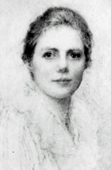
Lucia Fairchild Fuller was an American painter and member of the New Hampshire Cornish Art Colony. She was inspired to pursue art by John Singer Sargent. Fuller created a mural entitled TheWomen of Plymouth for the Woman's Building at the World's Columbian Exposition in Chicago in 1893. Best known for her portrait miniatures, she was a founding member and treasurer of the American Society of Miniature Painters.
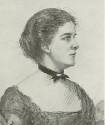
Florence MacKubin was an American portrait painter in miniature, pastel, and oil colors. She painted portraits of prominent people in the United States and the United Kingdom, as well as several famous copies of portraits, and exhibited at the Paris Salon, the London Academy, and the National Academy, New York.

Lydia Amanda Brewster Sewell was a 19th-century American painter of portraits and genre scenes. Lydia Amanda Brewster studied art in the United States and in Paris before marrying her husband, fellow artist Robert Van Vorst Sewell. She won a bronze medal for her mural Arcadia at The World's Columbian Exposition in 1893. She continued to win medals at expositions and was the first woman to win a major prize at the National Academy of Design, where she was made an Associate Academian in 1903. She was vice president of the Woman's Art Club of New York by 1906. Her works are in several public collections.

Mary Lizzie Macomber was an American artist who painted in the Pre-Raphaelite style.

The Accademia di Belle Arti di Napoli is a university-level art school in Naples. In the past it has been known as the Reale Istituto di Belle Arti and the Reale Accademia di Belle Arti. Founded by King Charles VII of Naples in 1752, it is one of the oldest art schools in Italy, and offers various levels of study up to and including the equivalent of an Italian laurea. It is located one block south of the church of Santa Maria di Costantinopoli, on the via of the latter church's name.
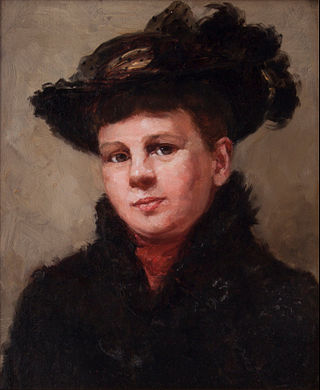
Clara Chipman Newton was an American artist best known as a painter of porcelain and china.

The sisters Clara Welles Lathrop (1853–1907), Bessie Stebbins Lathrop (1854–1930) and Susanne (Susie) Lathrop (1860–1938) were artists and teachers in Northampton, Massachusetts, who exhibited and traveled widely. Clara was a painter, Bessie was a leather worker and woodcarver, and Susie illustrated publications. In addition to exhibiting in the U.S. and Europe, they organized intellectual salons at their Northampton studio and taught art at schools including Smith College.
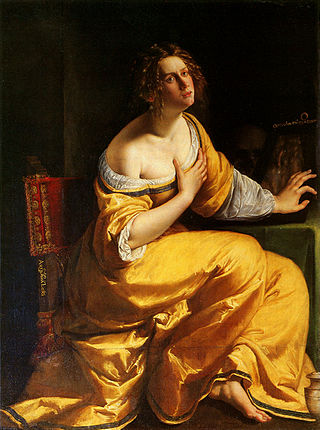
Penitent Magdalene is a 1616–1618 painting by the Italian baroque artist Artemisia Gentileschi. This painting hangs in the Pitti Palace in Florence. The subject is the biblical figure Mary Magdalene, but the painting references another biblical woman, Mary, the sister of Lazarus. This painting was likely painted during Gentileschi's Florentine period.
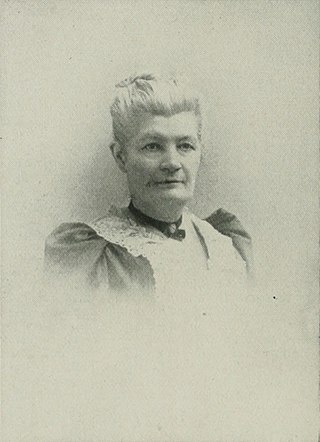
Emily Maria Scott was an American artist. The New York Watercolor Club, and the Pen and Brush Club were formed in her studio. She was also a writer of magazine articles. She served as president of the National Association of Women Painters and Sculptors, vice president New York Water Color Club, and was a member of the Pen and Brush Club, the American Water Color Society, the New York Women's Art Club, and the National Arts Club."
























